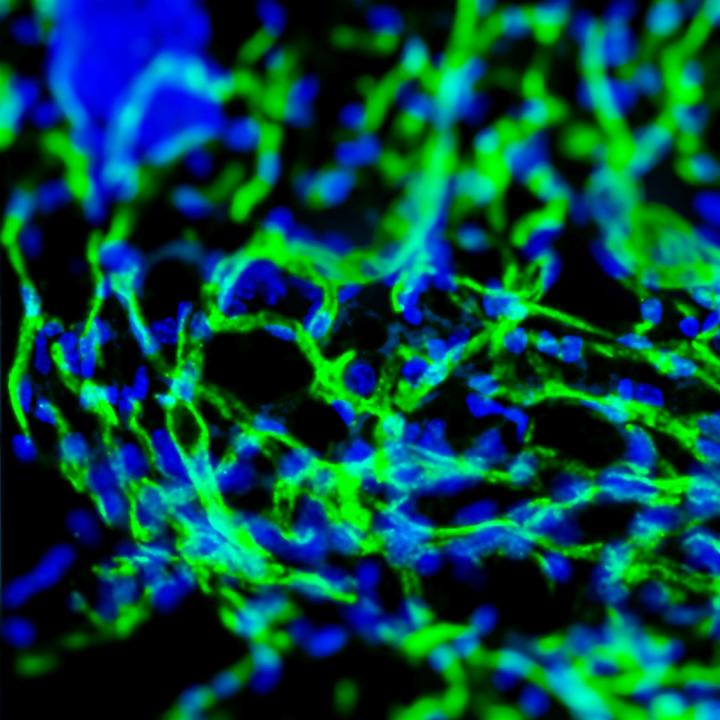
Credit: Photo: AG Shastri
When organs or tissues are damaged, new blood vessels must form as they play a vital role in bringing nutrients and eliminating waste. This is the only way for organs and tissues to resume their normal function. At present, the injection of growth factors or genetic material into the tissue site of interest can trigger angiogenesis, i.e. the growth of new blood vessels from pre-existing vessels. In a study published in the journal Advanced Materials, scientists from the Universities of Freiburg and Basel led by Prof. Dr. Prasad Shastri show that stable angiogenesis can be achieved by simple hydrogel injection. Due to its mechanical properties, this hydrogel resembles a blood clot.
The cells that organize into blood vessels need support from other cells for stability and blood flow regulation. The Freiburg researchers and the biomedical scientists Dr. Roberto Gianni-Barrera and Dr. Andrea Banfi from the University of Basel discovered a new population of cells of the immune system that circulate in the blood, the CD11b+ monocytes that produce the protein Piezo-1. This is one of the so-called mechanoreceptors that are necessary for the interaction of cells in the central nervous system, as Shastri found out in an earlier study. The scientists were also able to clarify the role of the cell population of CD11b+ monocytes in the stabilization of newly formed blood vessels. On the basis of these results, they have developed a hydrogel which, due to its mechanical properties, is able to stimulate the CD11b+ monocytes to form piezo-1 so that new blood vessels develop at the desired site.
“Our study represents a paradigm shift, as it shows for the first time that a mechanically defined microenvironment is capable of recruiting a specific population of mechanosensing cells that can aid in a regenerative process,” says Shastri. The results had an effect on the treatment of peripheral vascular diseases, explains co-author Dr. Melika Sarem. “The hydrogel is a simple means to induce new and healthy vascular systems in a target tissue,” adds Dr. Aurelien Forget, who co-led the study at the University of Freiburg.
###
Prasad Shastri is Professor of Biofunctional Macromolecular Chemistry at the Institute for Macromolecular Chemistry and Professor of Cell Signalling Environments in the Excellence Cluster BIOSS Centre for Biological Signalling Studies and at the University of Freiburg.
Media Contact
Dr. Prasad Shastri
[email protected]
Original Source
https:/
Related Journal Article
http://dx.




